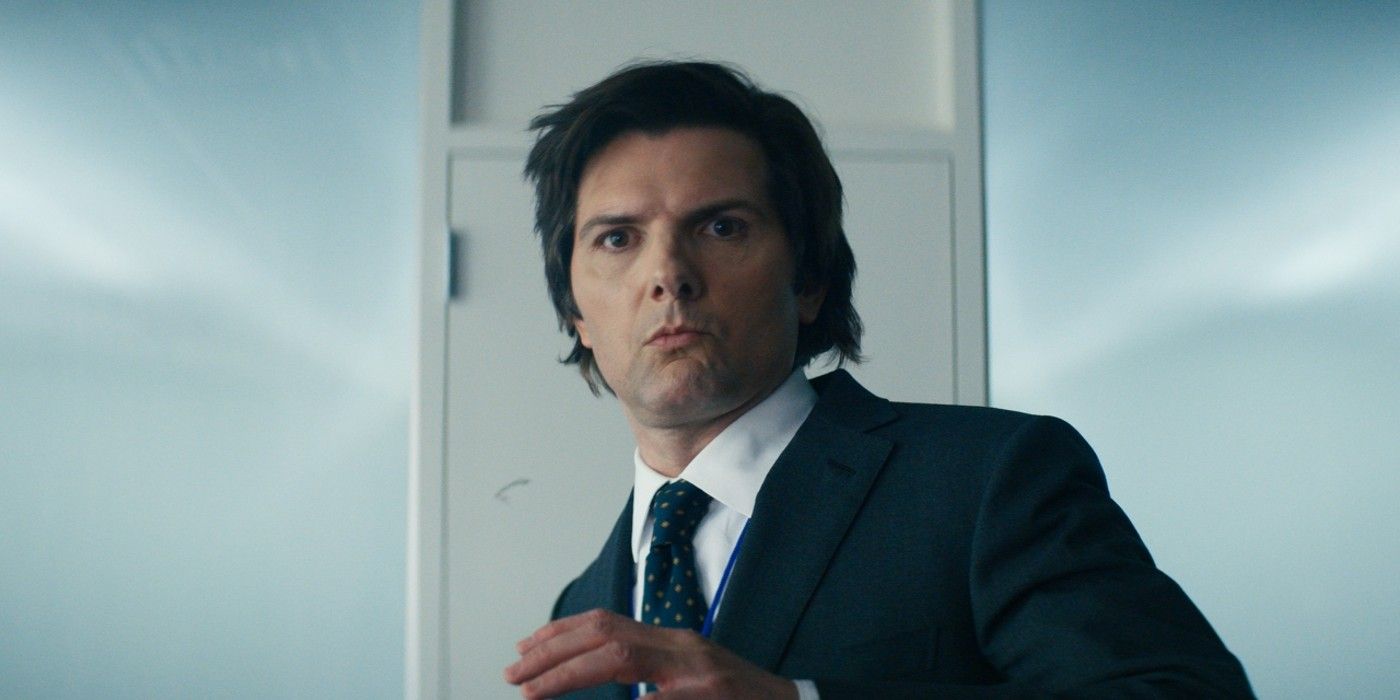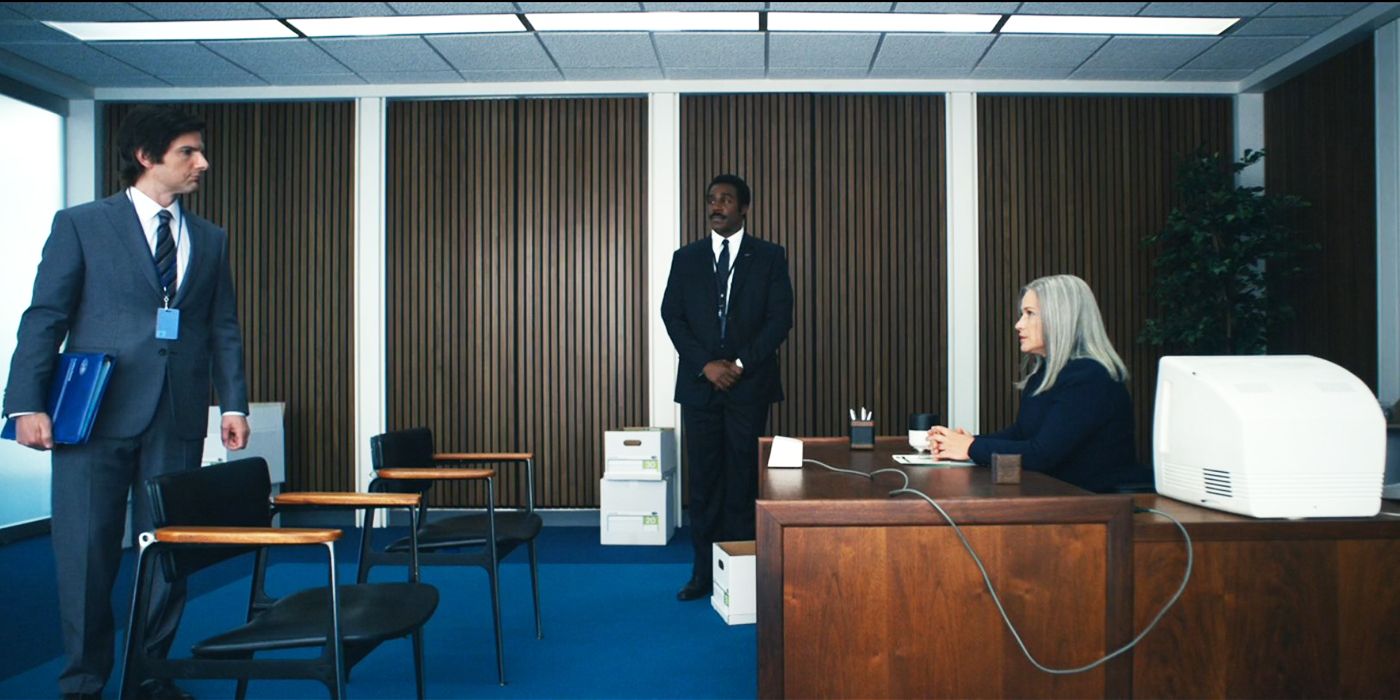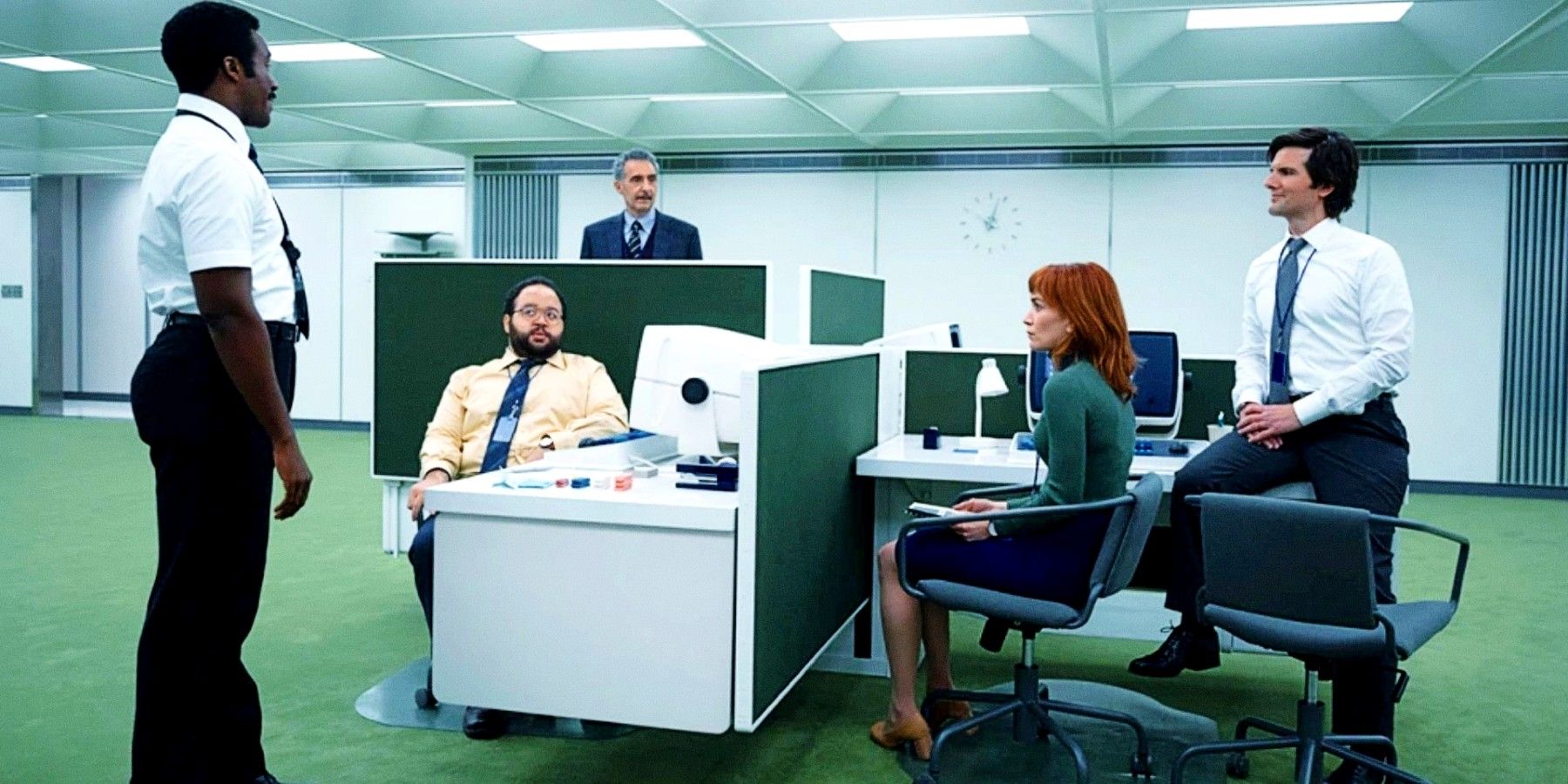Summary
- Retrofuturism in Severance’s design immerses viewers in a dystopian world with modern tech yet vintage aesthetics.
- Severance is set in the present day, utilizing visual cues to explore themes of hypercapitalism and advanced technology.
- Lumon’s retro design is a facade to conceal its sinister purpose, showing the importance of Severance’s modern-day setting.
Apple TV’s Severance tells a story about the effects of futuristic technology – yet Lumon Industries’ floor for severed employees is fully outfitted with retro computers and design. The juxtaposition of retro design and advanced technologies is a characteristic of retrofuturism, a creative movement that was born out of depictions of the distant future as imagined in earlier eras that will likely continue into Severance season 2’s story. The mid-century style of the severed floor is more than just an aesthetic choice, however, and serves to immerse the audience in the surreal, dystopian lives of Severance‘s cast of characters.
As of Severance season 1’s ending, the show aptly portrays its focus on Lumon Industries’ practice of splitting the memories of employees into two separate personalities. The “innie” selves of severed employees work within a retrofuturistic environment, complete with old-school computers and mid-century interior design. Meanwhile, their “outies” have access to smartphones, the internet, and all other modern amenities. This contrast has led many to question when Severance is set, with the show offering several clues that answer such a query.
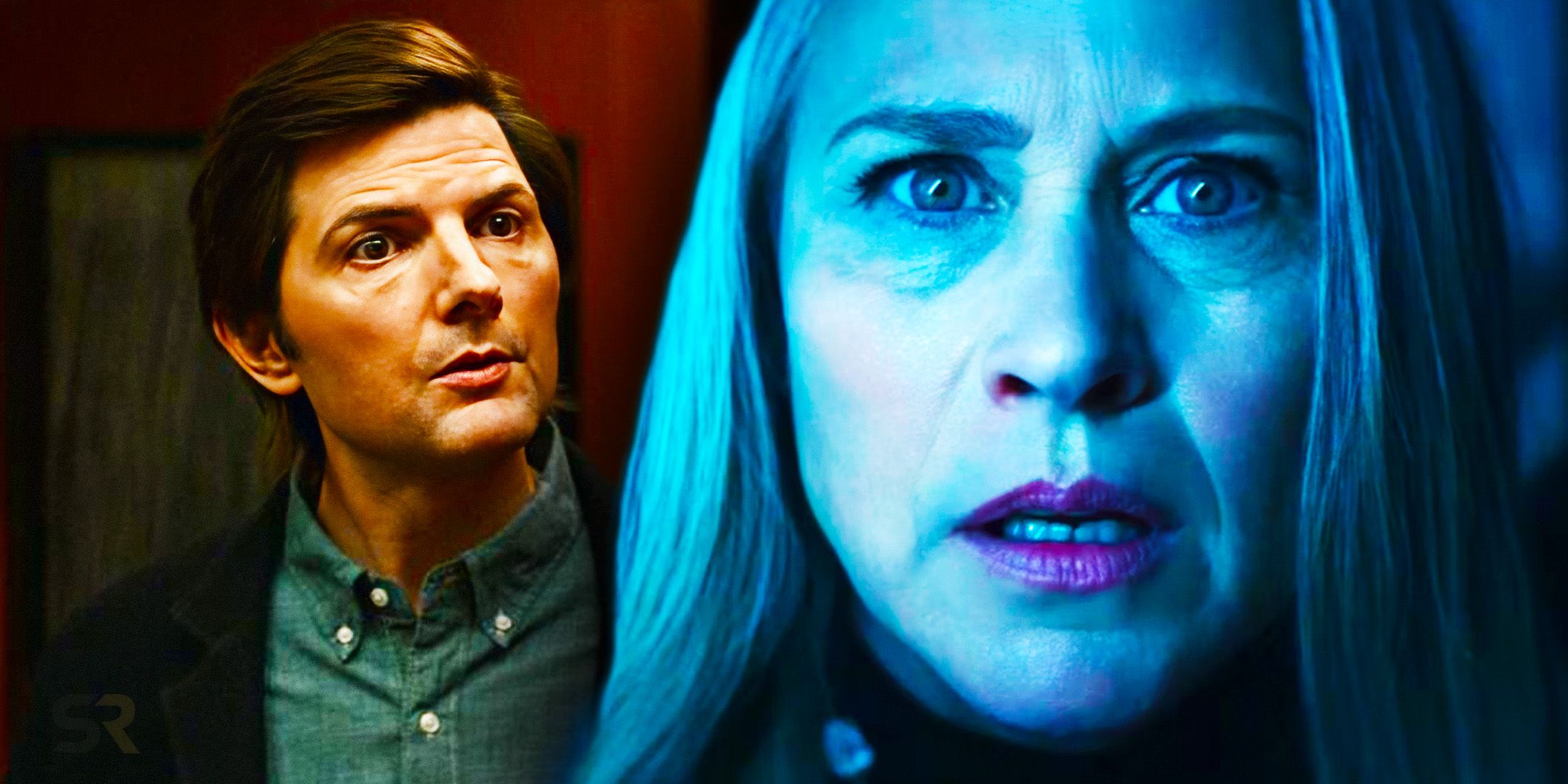
Why Severance Season 2 Is Taking So Long: Apple Sci-Fi Show’s Delays Explained
Although Severance season 2 has just finished filming, it’s been more than two years since season 1’s cliffhanger ending was released on Apple TV+.
Severance Is Set In The Present Day
Severance’s Context Clues Prove The Show’s Modern-Day Setting
While the blend of Lumon’s retro offices and the outside world’s modern society can be confusing, Severance is set firmly in the latter. This is confirmed via the driver’s license of Severance‘s protagonist. Mark’s license indicates that he was born in 1978 and that his license will expire in 2020, which means that the show is set in modern times. This matches the show’s production, which was initially due to take place in 2020 but was pushed back to 2021 by the COVID-19 pandemic.
Severance season 2 faced setbacks for other reasons, with the show’s creators falling out, resulting in House of Cards creator Beau Willimon joining the project.
Interestingly, Severance purposefully employs mixed visual cues in order to give viewers a glimpse into the confusing and sheltered lives of the severed as well as their place in modern society. Even on a more surface level, Severance‘s mixed visual styles simply sell the idea of two lives being lived by each character. The retro design of Lumon’s offices makes the innie characters feel completely different from the outie personalities, if only due to the subconscious differences that clashing designs imbue in the viewer.
Why Lumon Uses A Retrofuturist Design In Severance
The Design Of Lumon Has In-Universe Reasoning
Within Severance‘s universe, the design serves a practical purpose. The mid-century aesthetics throughout the severed floor are meant to provide Lumon employees with a workplace that radiates warmth, comfort, and nostalgia. This makes it easier for severed employees to accept their new lives, the entirety of which will be spent within Lumon Industries’ basement. In short, the homely but minimalist mid-century look of the severed floor is yet another lie to cover up the real purpose of Lumon Industries – a way to discourage the severed from asking too many questions and push them into doing what they are told.
This sense of good-natured employment radiated by the aesthetic of Lumon offers a good way to keep the employees working, begging the question of why severed employees are kept in the dark about the actual outcome of their jobs. Severance season 1 teased these answers, with former severed employee Petey explaining to Mark that working in Lumon Industries’ macrodata refinery department equates to “murdering people 8 hours a day” without even knowing it. Via the unassuming decor of the workplace, Lumon is keeping its employees in the dark, furthering one of Severance season 1’s biggest unanswered questions.
Why It’s So Important That Severance Is Set Today Instead Of In The Future
Severance’s Core Themes Are More Effective When Versed In The Present Day
Despite Severance‘s visual style evoking two distinct eras of human history, it is incredibly important that the show is set in the present. The visual language of retrofuturism allows Severance to explore tensions between the past and the future and provide a differentiation between both the empowering and alienating effects of advanced technologies. This is explored primarily via Lumon employees’ memories being split between their personal and professional lives, with the advanced technology in an old-looking world allowing the themes of the show to come to the forefront.
By using retrofuturism, Severance helps to establish that the characters exist within a modern, albeit dystopian, society. This allows Severance to more easily drive home its social commentaries and themes, predominantly the exploration of the horrors of emerging hypercapitalism in the real world. Severance‘s real-world parallels are not so subtle, with the show more than willing to delve into the idea that modern corporations are slowly beginning to control every aspect of society, even people’s lives, using advanced technology.
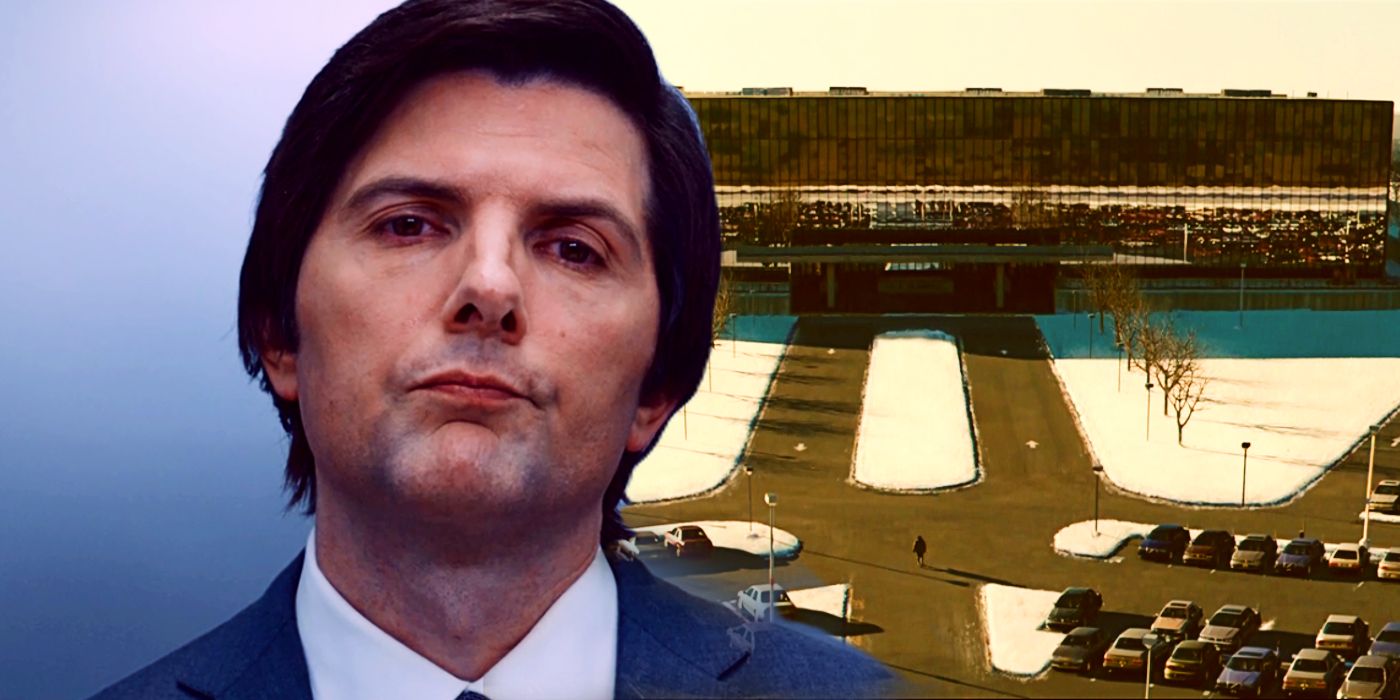
Severance’s Lumon Has Some Disturbing Real World Tech Company Parallels
Comparing Severance’s Lumon to one type of business isn’t easy, but there are many similarities between the company and real-world tech giants.
If this storyline had been set in the future, these themes would simply have been less impactful. One of the advantages of telling any story set in the future is the suspension of disbelief. Stories set years beyond the present can easily implement more advanced technologies or seemingly unthinkable aspects without alienating audiences, creating an inherent feeling of make-believe and unreality in the viewer. If this had been the case for Severance, the exploration of hypercapitalism would have fallen under the same umbrella of a fictional, fantastical, exaggerated story set in the far future.
The modern appearance of
Severance
‘s world outside Lumon evokes the present day in the real world, thus making the story feel more like one that could happen to society today…
By setting Severance in the present day, however, the ideas of advanced technologies, massive corporations, and overwhelming capitalism instantly feel much more plausible. The modern appearance of Severance‘s world outside Lumon evokes the present day, thus making the story feel more like one that could happen to society today, at a moment’s notice. Contrasting this with the eery, old-fashioned look of Lumon only doubles down on the theme of capitalist corporations conducting shady business behind a veil that the public cannot see, driving home how important Severance‘s modern-day setting truly is.
Other stories about fictional institutions that hide sinister purposes behind friendly, colorful branding include Loki and Fallout.
Severance’s Production Designer Has Provided New Layers To The Retro Style
Severance’s Creators Were Well Aware Of The Importance Of Visual Style
As Severance production designer Jeremy Hindle said in an interview, the severed floor was intentionally stylized both for aesthetic and narrative purposes. Considering the majority of the show’s action takes place within the severed floor, it needed to be much more beautiful and visually interesting than a regular office setting. Notably, the retro design is also a subtle reminder that Lumon goes to great lengths both to protect its secrets from outsiders and to shield innies from the outside world, which explains the logistics of the basement’s unique furnishings and machines.
Severance
season 2 is expected to reveal even more of the world outside Lumon’s basement, and it will be interesting to see how the show’s trademark visual language will translate…
As Hindle explained (via Thrillist), “They [Lumon] fabricate all their own stuff. Everything has their label, everything has their packaging, and it’s not like a sticker. It’s theirs. They own all of this.” Indeed, just like the severed floor’s break room, the wellness center, or the paintings put up by Optics and Design, the basement’s gorgeous aesthetic is a reminder that everything inside the severed floor – including the employees – are proprietary assets of Lumon Industries. Severance further drives this point home by contrasting its cozy, colorful, and ‘60s-inspired basement with the dreary outside world.
Similarly, the modern minimalism of the homes in Kier Town also provides a visual cue as to how the severed floor is several eras removed from real society. Apart from allowing Severance to visually stand out in a landscape where stories about corporate dystopia are a common theme, the severed floor’s retrofuturism subtly reveals more about Lumon. Severance season 2 is expected to reveal even more of the world outside Lumon’s basement, and it will be interesting to see how the show’s trademark visual language will translate regarding fleshing out other parts of the unique sci-fi universe.
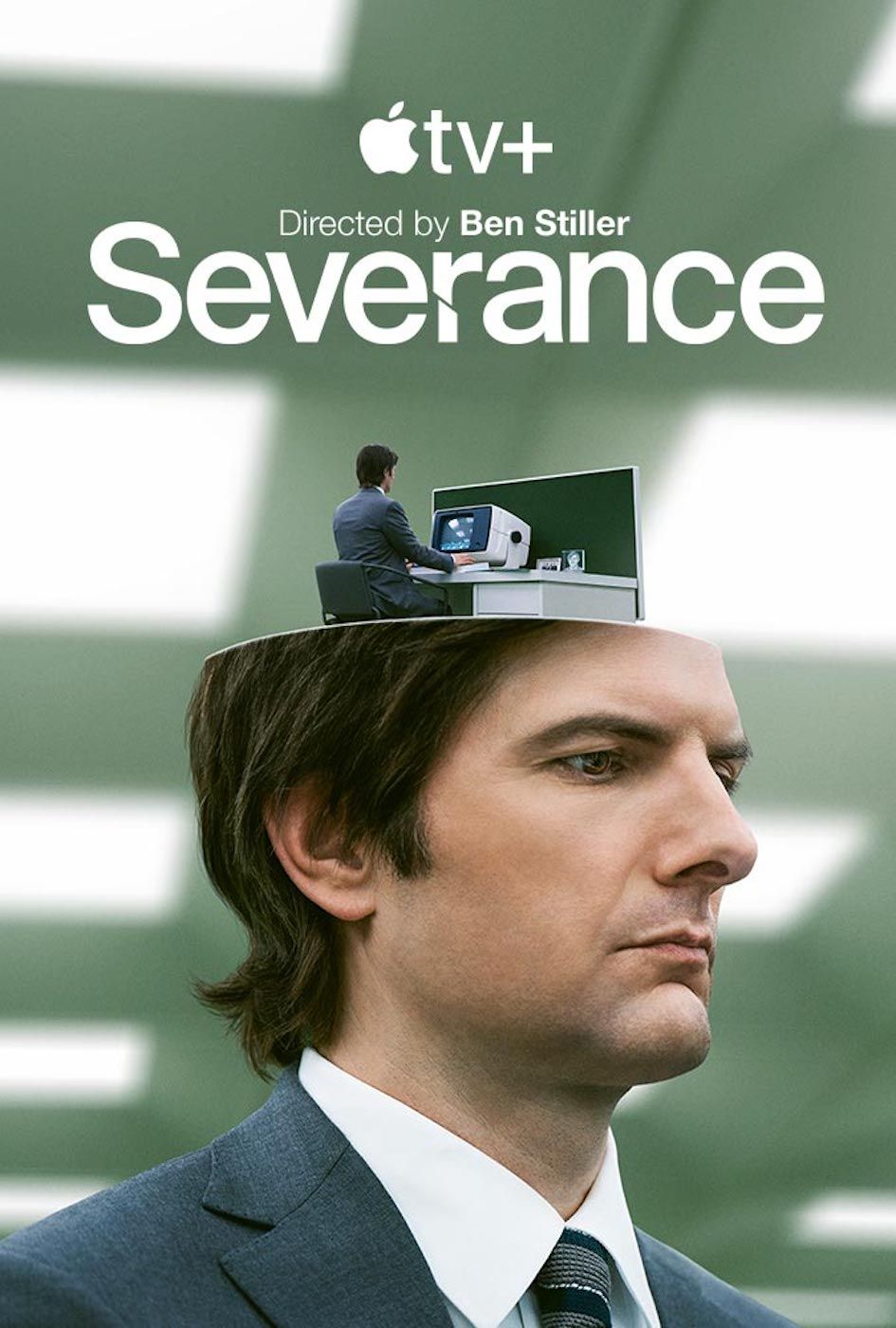
Severance
From director and executive producer Ben Stiller and creator Dan Erickson comes “Severance.” Mark Scout (Adam Scott) leads a team at Lumon Industries, whose employees have undergone a severance procedure, which surgically divides their memories between their work and personal lives. This daring experiment in “work-life balance” is called into question as Mark finds himself at the center of an unraveling mystery that will force him to confront the true nature of his work… and himself.
- Cast
- Christopher Walken , Tramell Tillman , Michael Chernus , Adam Scott , Britt Lower , Patricia Arquette , Jen Tullock , John Turturro , Dichen Lachman , Zach Cherry
- Seasons
- 1
- Writers
- Dan Erickson
- Showrunner
- Dan Erickson , Mark Friedman
